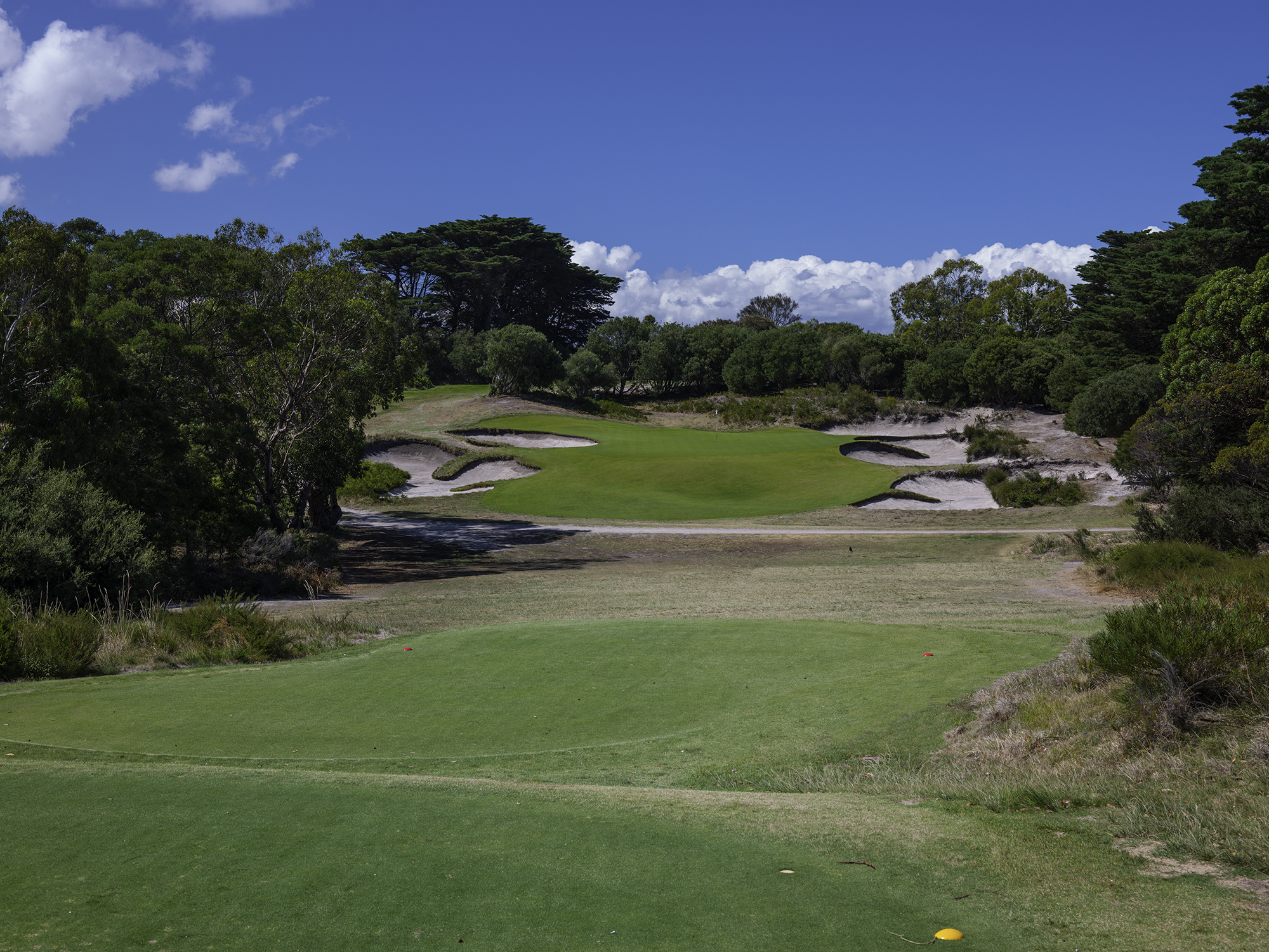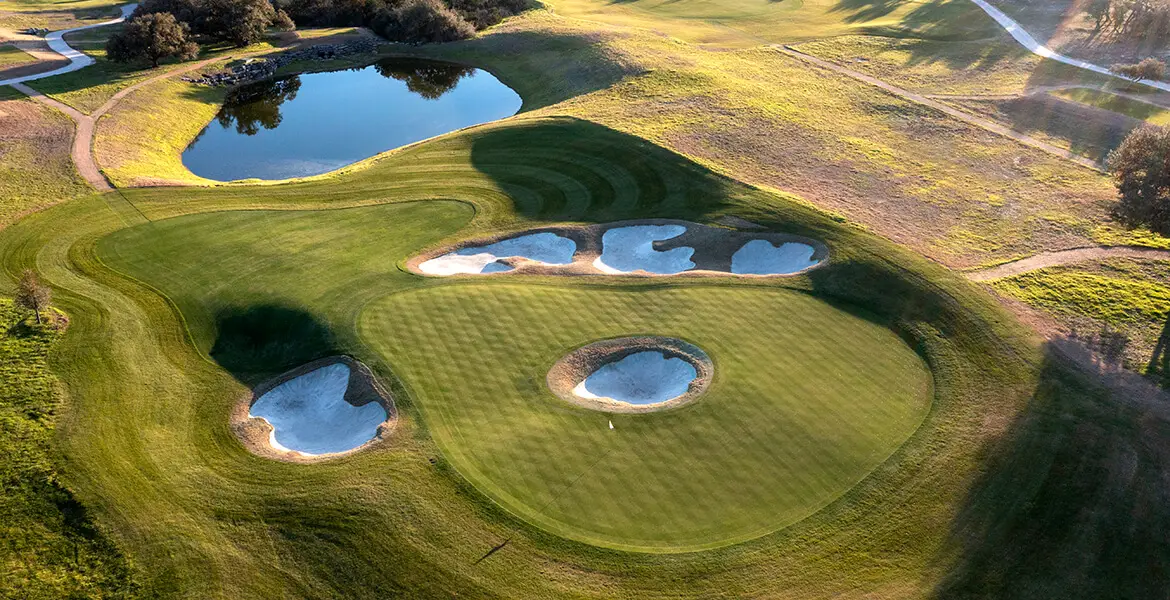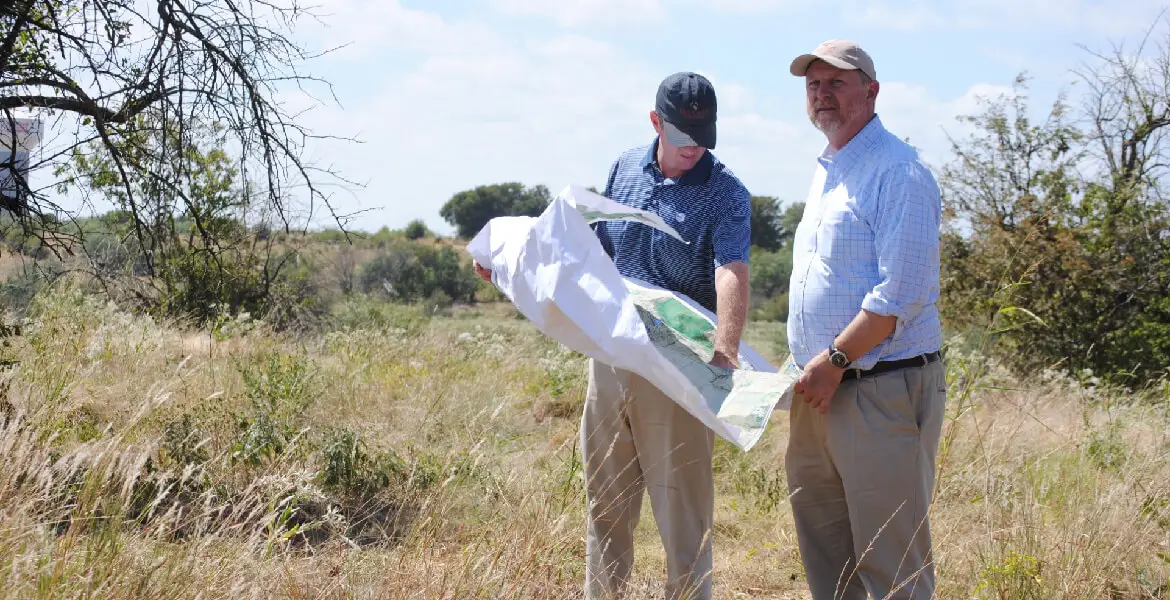Anyone who’s had the good fortune to discuss golf course architecture with designer Jim Urbina, or rather listen to him talk about it, knows to expect an Alister MacKenzie quote at some point. Here’s one of his favorites: “It may at first appear unreasonable that the question of aesthetics should enter into golf course design. However, on deeper analysis, it becomes clear that the great courses, and in detail all the famous holes and greens, are fascinating to the golfer by reason of their shape, their situation, and the character of their modelling. When these elements obey the fundamental laws of balance, of harmony, and fine proportion, they give rise to what we call beauty.”
These words first appeared in Golf Architecture, published in 1920, and were repeated in The Spirit of St. Andrews, written in 1933 but not published until 1995. Of course, the English-born designer spoke a lot about the importance of beauty to a golf course, saying the chief object of an architect or greenkeeper was to mimic nature so closely as to make his work “indistinguishable from nature herself”—something he learned during his camouflaging days in the Boer War. And, though he doesn’t use the word explicitly—probably because its use among architects began long after he died—MacKenzie was essentially talking about “tie-ins.”
You’ll often hear words like “connecting”, “blending”, “concealing”, and “disguising” when the subject of tie-ins comes up. Nick Schaan, David McLay Kidd’s design partner, puts it like this: “When executing larger earthworks and rough shaping, we pay very close attention to how various manmade shapes meet natural shapes without someone being able to tell where the seam is. Do it right, and it makes what was created look natural and imperceptible. Basically, we’re trying to make it look like we’ve done very little.”

Urbina, who recently completed an 18-month restoration of the MacKenzie-designed greens at Pasatiempo in California where he reinstated numerous lost pin locations, says he’s constantly thinking about tie-ins, that getting them right is the sort of thing that keeps him up at night, and that an in-depth analysis of tie-ins is like a 700-level college course. “They ensure the big picture is beautiful and harmonious like MacKenzie said,” Urbina notes. “But, in creating that picture, an architect must consider the tiny details. Great architects are able to think in inches whereas lesser architects think in feet. To create a great tie-in, wherever it is on the course, takes time and skill, and not doing it well is a great disservice to both the golfer and the land.”
We’ve said before that quirk, in the context of a golf course, is difficult to explain but certainly recognizable when you see it. Tie-ins are the opposite—it might actually be quite easy to explain what they are but you might have a hard time seeing them as expert shapers are pretty adept at making newly built features appear as though they’ve existed for centuries. Good tie-ins blend or, as Thad Layton says, create flow. The former senior architect and vice president of the Arnold Palmer Design Company (APDC), who established his own company in 2022, names Royal Melbourne and Pinehurst No. 2 as two great courses with solid tie-ins, where “pinnable areas merge into false fronts before transitioning out of the putting surface into a bold swale or mound guarding the approach.”
Urbina, meanwhile, says great tie-ins are usually those you’re not aware of. The second half of MacKenzie’s quote from earlier reads: “This excellence of design is more felt than fully realized by the player but, nevertheless, it is constantly exercising a subconscious influence on him, and in course of time he grows to admire such a course as all works of beauty are eventually felt and admired.”
Bad tie-ins are like those moments in TV shows when the music suddenly stops and the stylus scratches the vinyl. It’s jarring, mildly unsettling, and you’re definitely aware of them.
Those we spoke with named a handful of architects who build/built great tie-ins, with the usual suspects front and center.
“Coore & Crenshaw and Tom Doak’s work showcase their skills at blending features together harmoniously and artistically,” says Brandon Johnson, who like Layton is a former VP at APDC who also has his own firm now. Schaan adds Gil Hanse whose team, he says, has built many wonderful greens that seem to just lay on the ground. “It’s hard to tell where they did and didn’t shape,” Schaan adds.

A couple of other names also cropped up. “What Mark Parsinen achieved on the 9th hole at Castle Stuart in Scotland (now part of Cabot Highlands) is a great example of large cuts/fills balanced with nuanced contours,” says Johnson. “He created believable landforms that tie in naturally with the existing grade when, in fact, the majority of it was created.” Schaan also regards Tom Fazio’s work highly. “He moves a lot of dirt which obviously means there’s more to tie in,” Schaan says. “But though there are times when I can tell where the cuts and fills are, I often can’t tell where the limits of the work were.”
Architects are obviously responsible for a large part of a tie-in’s effectiveness, but the role superintendents play is also crucial. “It’s imperative to discuss turf choice and mowing lines with the superintendent,” says Layton. “Mowing lines shift over time, and top-dressing can lead to sand build-up around green edges. So, it’s wise to periodically check mowing lines with the superintendent to preserve the subtleties of the design.”
Urbina likewise recognizes the importance of the super’s role. “If Ken Nice (senior director of agronomy at Bandon Dunes) or Justin Mandon (superintendent at Pasatiempo) don’t buy into the architect’s thinking, there’s bound to be problems,” Urbina says. “They apply the science to the big picture MacKenzie alluded to and, without that essential ingredient, tie-ins are unlikely to work, and the visuals will be disappointing.”
Occasionally, the visuals an architect creates can be at odds with convention. Schaan admits he and Kidd “purposefully don’t tie things in” at times to create a feature that’s “intended to be bold.” And Pete Dye was something of a maverick, of course, often rejecting palatable harmony in favor of dissonance. “He was probably the best at highlighting abrupt, in-your-face, quick grade resolutions that defined his iconic style,” says Johnson. “It could create some antagonism in your mind but that was intentional.”
Dye’s tendencies (and those of the notoriously eccentric Desmond Muirhead) aside, tie-ins are there to soothe the golfer’s soul, often without them even knowing it. Johnson knows how important they can be saying regardless of their size or where they’re located, tie-ins are the “defining factor in great architecture and course presentation,” while Urbina believes great architects and superintendents will sweat the details to ensure the course is pleasing to the eye. “That’s the art of a good tie-in,” Urbina says. “They pacify your mind and make the whole experience better.”





